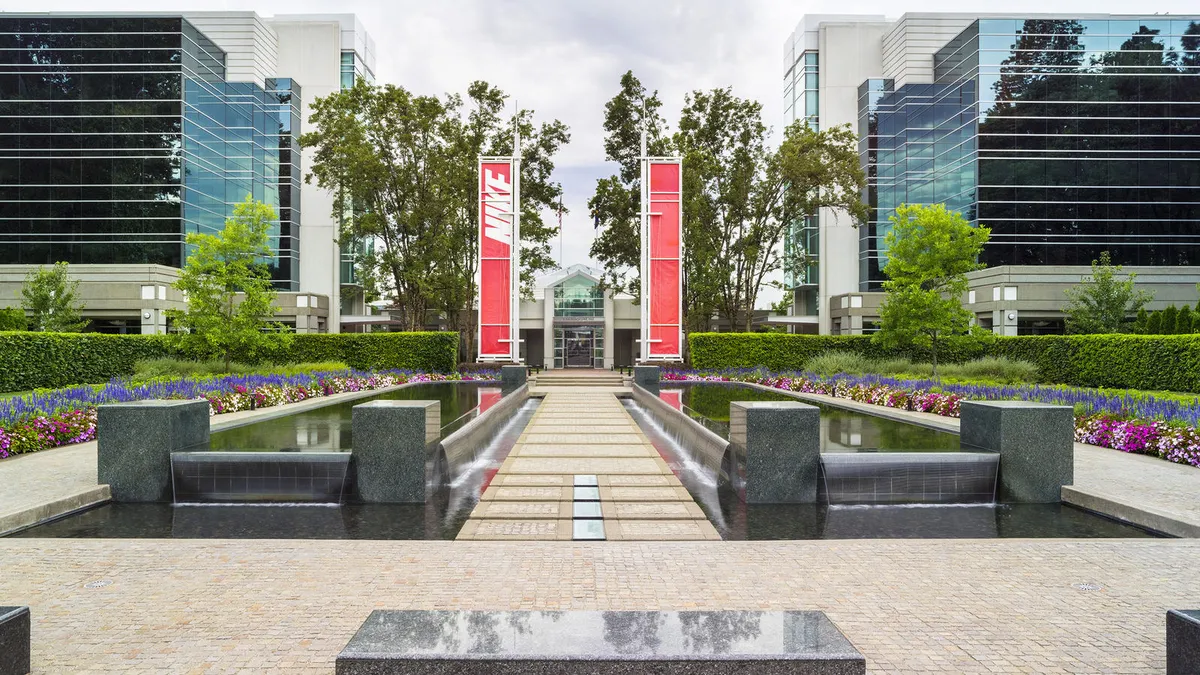Nike isn't the only one betting its future on DTC.
In conjunction with Adidas' end of year results, the sporting giant announced a four-year plan, dubbed Own the Game, which calls for a shift to a DTC-led model. The company plans for direct to consumer to make up 50% of net sales by 2025, as e-commerce doubles to between 8 billion euros ($9.6 billion as of press time) and 9 billion euros. That's up from a 30% DTC business in 2019 and 40% in 2020, executives said during a virtual presentation. That includes paring down wholesale partners to focus on strategic partnerships.
The retailer expects the strategy to push forward some big growth goals, including growing net sales by between 8% and 10% each year, and growing net income between 16% and 18% each year. DTC will drive more than 80% of the company's net sales growth over the next four years, according to CEO Kasper Rorsted, who spoke about the strategy Wednesday.
Harm Ohlmeyer, chief financial officer of Adidas, highlighted that consumers are now more interested in shopping directly with brands than at multi-brand retailers. The shift to focus on that channel won't be without its operational challenges, though.
"Moving from a largely wholesale-driven to a DTC-led business model is a tremendous opportunity from a strategic and from a financial perspective," Ohlmeyer said. "But it also means that an increasing share of sales is realized by shipping individual parcels to consumers instead of large bulks of products to wholesale partners. Individual product returns need to be handled, omnichannel offerings are becoming more important. All of this increases the complexity in our supply chain and we hold onto inventory longer. That said, we have a clear understanding of all of those moving parts and have a proven ability to mitigate them."
Ohlmeyer noted that the strategy shift is expected to bring Adidas "significant" market share gains, as well as higher revenues and margins. It will be fueled by larger investments in digital and marketing: The company plans to invest 1 billion more euros into marketing by 2025 than in 2021, and funnel over 1 billion euros into its digital transformation.
"We are building an integrated ecosystem," Rorsted said of how stores and digital will interact, noting that stores are most effective when they are "built into the digital ecosystem."
It's similar to the way Nike thinks of its stores, which often include digitally enabled features. Adidas is also prioritizing its membership and its apps to help deepen its ecosystem, which is a key part of Nike's strategy as well. The company currently has 150 million members, and wants to triple that, to 500 million by 2025.
The overall store strategy for Adidas, though, is slightly different. Adidas plans to double its Halo stores by 2025, and revamp its concept store strategy. The plan there is to have larger concept stores, but fewer of them. Factory Outlets will continue to grow, and be upgraded as well, Roland Auschel, executive board member of global sales, said on the call. The strategy of increasing square footage seems to be the opposite of what Nike has planned, which includes up to 200 small-format stores focused on local communities.
In addition to emphasizing a more DTC-focused strategy, Adidas also announced five product categories that it aims to own over the next four years: Soccer, running, training, outdoor and lifestyle. The retailer expects those categories to account for 95% of its sales growth over the next five years, and the goal is to be either the No. 1 or No. 2 retailer in each of them. That means other sports may fade out of importance for the company, Rorsted added.
All of the retailer's investments in this strategy are based off of consumer trends in product categories and digital, according to Rorsted. Running, training and outdoor is expected to make up 40% of industry growth through 2025, while lifestyle (an athleisure correlate) is expected to make up 50% of industry growth during the same time period. Digital, for its part, will reach industry penetration of 40% by 2025, Rorsted said.
The emphasis on athleisure is new for Adidas, and execs highlighted that it is one of the biggest growth opportunities for the company. In order to better address that market, the retailer is introducing a new consumer proposition, dubbed Sportswear, which is in addition to its two other major categories, Adidas Performance and Adidas Originals. As the name suggests, Adidas Performance emphasizes technical sport gear, but both Adidas Sportswear and Adidas Originals are more focused on style. Originals has been focused on capturing the streetwear consumer, which will continue, while the new Sportswear category will target the athleisure market and launch in 2022.
"The creation of Sportswear as our new consumer proposition will allow us the following: It will allow us to create a new identity, develop a dedicated sports lifestyle collection, roll out sportswear-specific experiences at the point of sale," Brian Grevy, executive board member of Global Brands, said. "Consumers will buy into sportswear looking for sports functionality, comfort, with no compromise on style."
Tied to the athleisure movement is a renewed focus on the women's market. The retailer just a few weeks ago announced a women's-focused product line dubbed Formotion, which it referred to as its "most supportive activewear to-date." Over the next few years, the company aims to renew its focus on the women's market and grow the business in the mid-teens annually.
The women's sports market has been the focus of most athletics retailers over the past few years, as athleisure continues to grow and brands begin to recognize where they've fallen short serving the market before.
"We will move away from the undifferentiated gender approach of the past," Grevy said. "Instead, we will now execute a cross-category women's plan to inspire and enable her in sports and culture."
Sustainability is the last big pillar of the Adidas strategy, with the company planning to make nine out of 10 of its products sustainable by 2025. Currently, that number is at six of 10. That's alongside goals to be climate neutral in its own operations by 2025 and climate neutral overall by 2050.
The company's sustainability aims are nothing new, and include partnerships with the likes of Allbirds, which itself has gotten into the sustainability athletics space with its recent running shoe launch.























